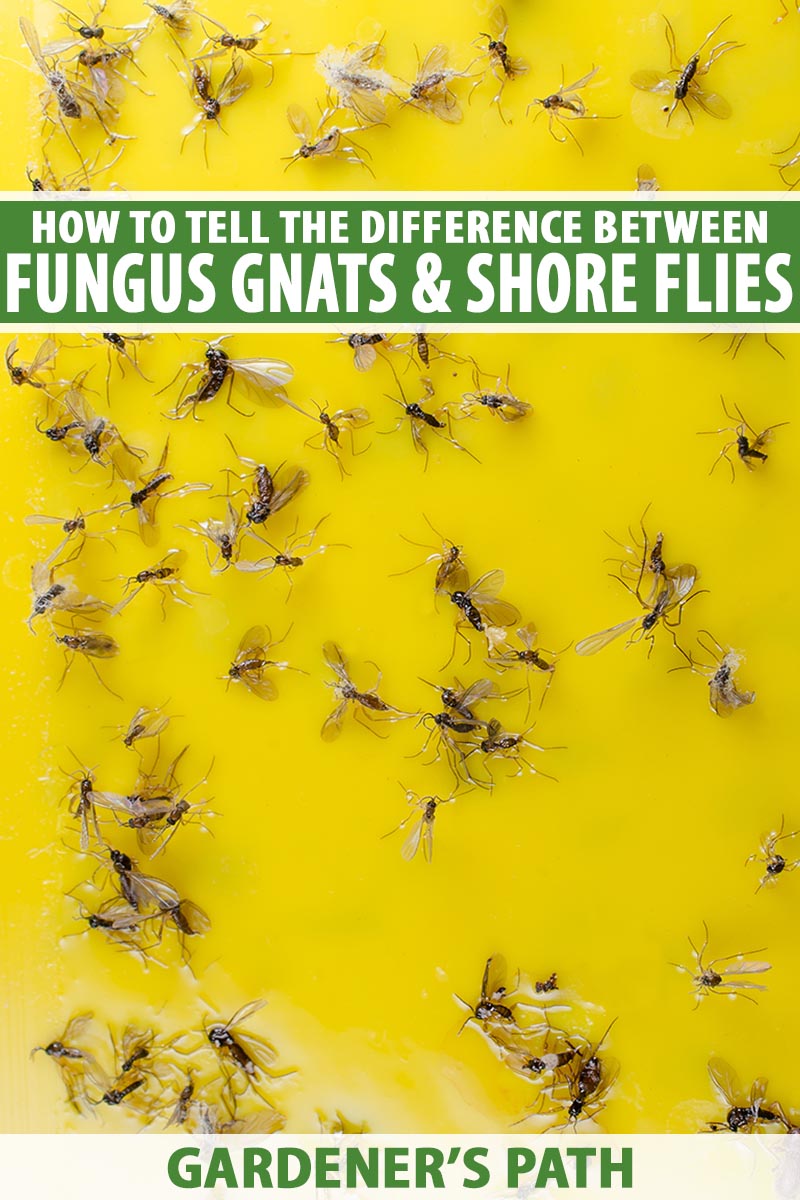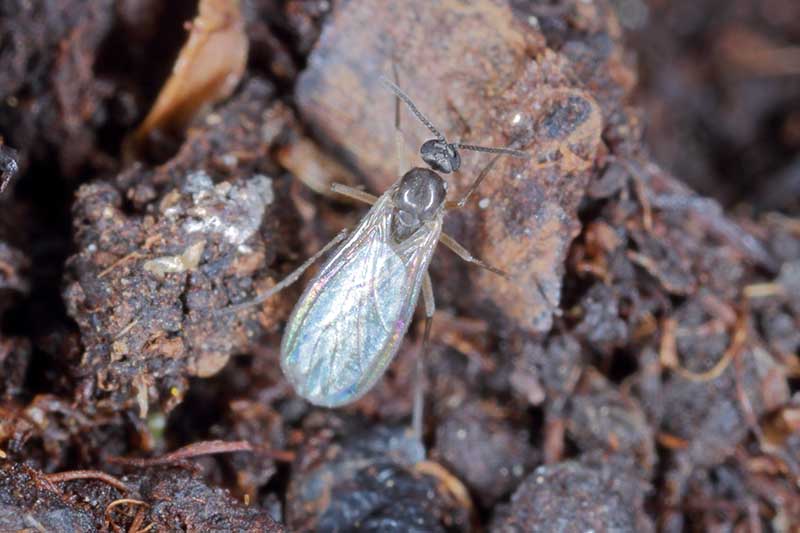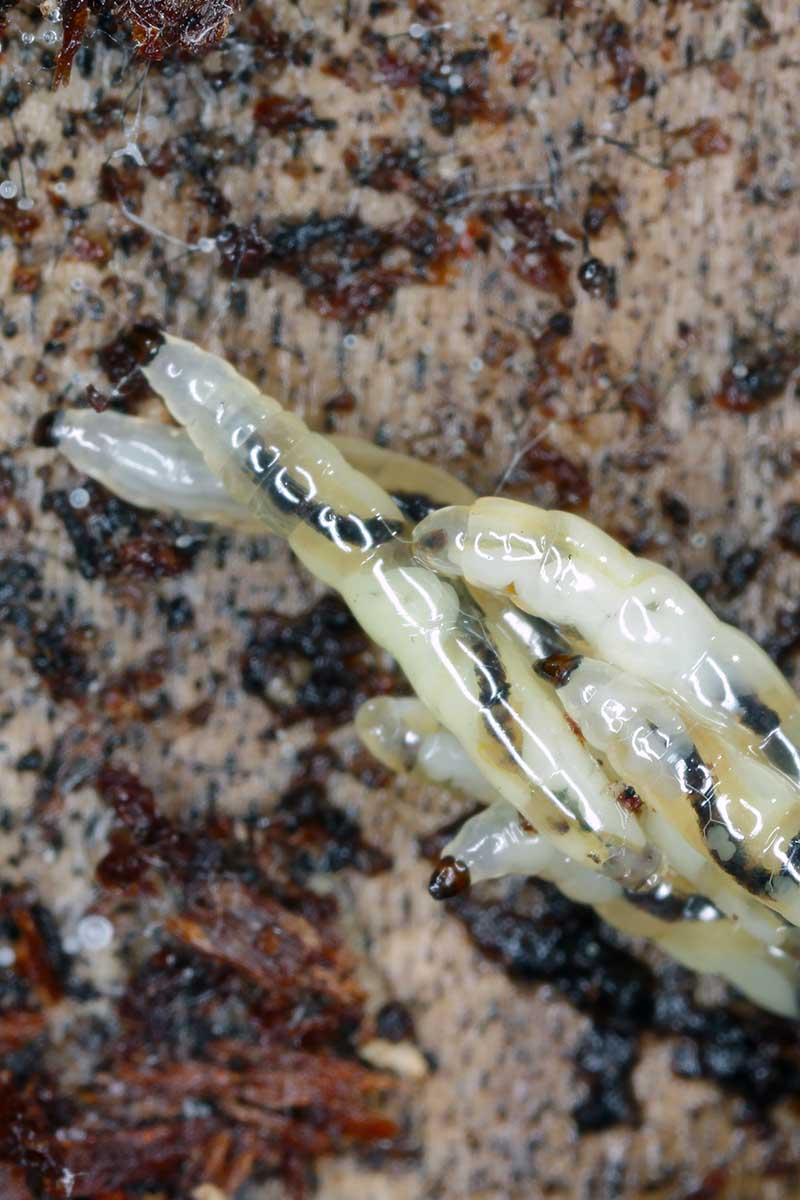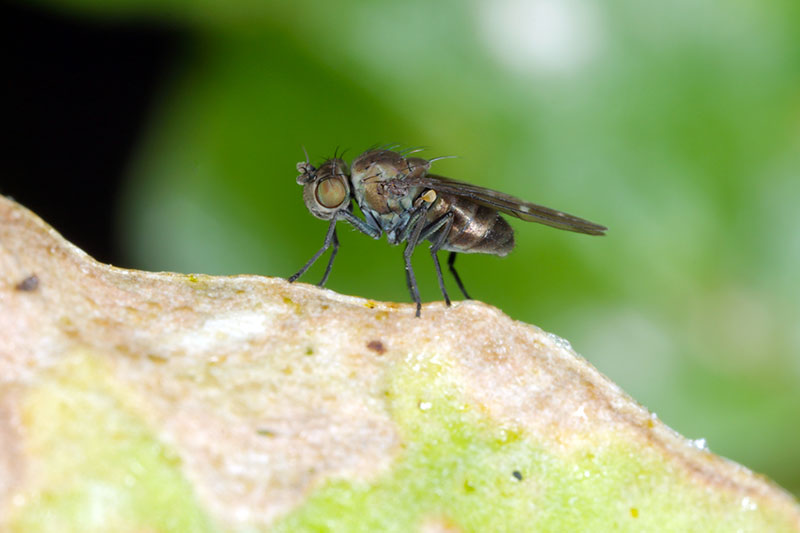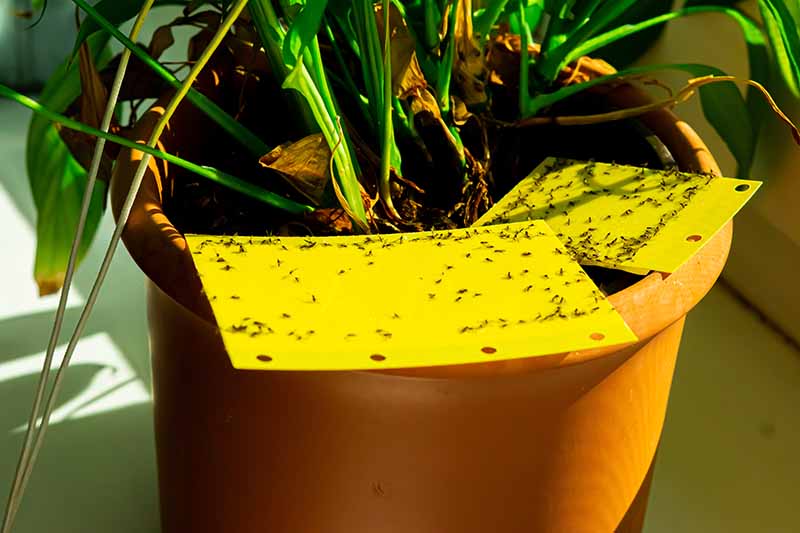Both are often found hovering around plants. Both like moist conditions. And both are nuisance flies that can become pests by transmitting disease and reducing the aesthetic quality of your plants. We link to vendors to help you find relevant products. If you buy from one of our links, we may earn a commission.
Identification and Biology
Bradysia spp, or fungus gnats, are dark brown or black, 1/16- to 1/8-inch-long mosquito-like insects with long, thread-like antennae, dangly legs, and clear wings. The adults are weak fliers, and you’ll often find them resting on the edges of pots, on plant leaves, or on the soil surface. The larvae are slender, whitish, translucent maggots that reach a quarter of an inch long when fully grown. Their digestive system is often visible, and the maggots have a distinctive, shiny black head capsule. Shore flies, the most common species found being Scatella stagnalis, are housefly-shaped, and an eighth of an inch long, with dark wings that have five light spots. They have small legs, short, bristle-like antennae, and reddish eyes. They are strong fliers, and buzz around with more purpose than the gnats do. Their larvae are opaque cream to tannish brown rice-grain-like maggots that appear headless, lacking the black head capsule fungus gnat maggots have. The difference in their appearance is not always obvious when they are flying around. Catching a good look at them while resting – or better yet, stuck to a sticky card – makes identification easier. For a closer look, view the pests with a hand lens.
Location and Symptoms of an Infestation
Both of these pests love damp locations, so any time when you have wet potting medium or standing water around, be prepared to see one or the other of these insects flying about. Fungus gnats are common in homes and in greenhouses. The larvae feed on decaying fungi and organic matter in the potting medium, and they may damage roots if populations grow large enough that the maggots are competing for food. Damage is primarily seen on seedlings and cuttings. Root rot is often a secondary symptom of larval feeding, thanks to the root wounds they cause. Adult gnats leave fecal spots, aka flyspeck, on the plant surfaces, reducing the plant’s aesthetic qualities. Shore flies are primarily a greenhouse nuisance insect. Usually the only damage they cause is flyspeck, similar to Bradysia adults. The maggots feed on algae, and on rare occasions they may feed on roots infected with fungi.
Detection and Monitoring
Besides seeing the insects on or around your plants and noticing their damage, another way to detect them more intentionally is by setting up sticky cards. These not only capture the insects and help with monitoring, but once they’re stuck and immobile, they are a lot easier to identify. Use yellow sticky cards to monitor and trap fungus gnat adults. Blue sticky cards are more effective for trapping shore flies. But both colors will catch either of these pests as they hover or zip past. Use a hand lens to take a closer look, noting the differences to help you identify which insect you’re working with. You can monitor for the larvae of both insects with slices of potato set on the potting medium surface. The maggots will move through the medium to feed on the potato, where they are easy to see and identify. Check for larvae every three to four days.
Causes for Infestation
Fungus gnats and shore flies share reasons why they may become an issue. These include overfertilization, which fosters fungi and algae growth, overwatering, high concentrations of organic matter in the growing medium, and plant debris, which all support reproduction. Avoid all these causes if you’re not keen on finding these insects. For more information on how to deal with fungus gnats, check out our specific control guide. Learn more about shore flies here. (coming soon!) By analyzing the above-described qualities of their appearance and symptoms, along with some handy traps and a magnifying glass, the differences between them become apparent. Let us know in the comments below if you’ve dealt with either, or a combination, of these flies before. Next up, it’s not just fungus gnats and shore flies that can bug your plants. Read up on how to identify other plant pests here:
How to Identify and Control MealybugsHow to Identify and Control Spider Mite InfestationsHow to Identify and Control Thrips
